More private capital required for seaports
Two weeks ago, Gemalink deepwater seaport welcomed Spain’s M/V OOCL, a cargo vessel with capacity of over 24,100 TEUs, on its first voyage linking Asia and Europe. This is the first time Vietnam has welcomed the largest jumbo container ship in the world.
To welcome more ships of this size, phase 2 of the superport at Cai Mep in the southern province of Ba Ria-Vung Tau will help double Gemadept’s cargo handling capacity and contribute to optimising the port ecosystem and logistics network stretching from north to south.
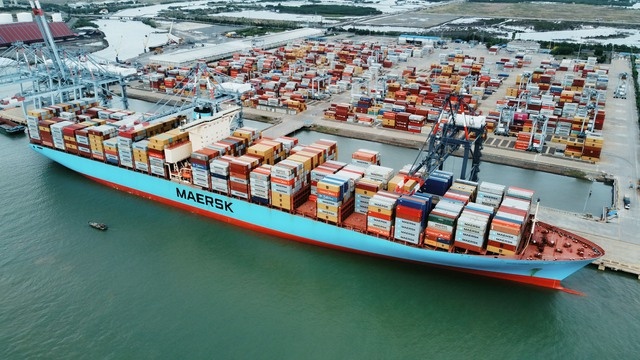 |
| Cai Mep International Port, Source: VGP |
Key projects elsewhere for the corporation include the final stages of putting Nam Dinh Vu Port’s Phase 2 into operation, in the northern port city of Haiphong. Gemadept is arranging capital to deploy the construction of the second phase of the port as soon as possible to ensure the initiation of operations during 2024-2025.
In addition to new investment, mergers and acquisitions will be prominent in the port industry in 2023. Vietnam Container Shipping JSC intends to acquire 49 per cent of Vinaship JSC’s charter capital and has announced the acquisition of a port in the Haiphong port complex.
Gemadept intends to divest from Nam Dinh Vu Port and sell strategic investors a 24 per cent stake in it.
“The market consolidation is an effective approach that allows businesses to fulfil the logistics chain, increase their negotiating power, and reduce competition,” according to SSI Research.
Competition is fierce in the Haiphong port area, and the port’s location is behind Bach Dang Bridge, so while the channel is restricted, the majority of products are transported by the Hai An fleet. The port is capable of receiving vessels between 15,000 and 20,000 DWT.
Numerous investors believe that the profit margin of seaport businesses in 2023 could be lowered due to a decline in demand and revenue, while costs increase, particularly raw material costs and loan interest. Hai An Transport and Stevedoring JSC anticipates a total revenue of $115 million in 2023, a drop of more than 15 per cent, and a profit after taxes of $12.8 million, a decrease of nearly 64 per cent.
The majority of seaport companies for 2023 are more pessimistic than last year; slower growth and unrestrained inflation are likely to reduce consumption in Vietnam’s primary export markets. Analysts believe that it will be challenging for import-export value and customs clearance volume to continue growing at the same rate as in previous years, and that they may even stagnate. This will intensify competition in the port segment, particularly in the north.
According to the General Department of Customs, Vietnam’s total import and export turnover for the first quarter of 2023 was estimated at $154.27 billion, a 13.3 per cent fall.
The current surplus of containers indicates a global decline in freight demand, resulting in a decline in the port company’s profits. This is projected in the fourth quarter of the 2022 financial statements of numerous companies, including SP-SSA International Terminal (SSIT).
Phan Hoang Vu, deputy general director of SSIT, said that this year’s market continues to confront numerous challenges. “Globally and in Vietnam, there is an excessive number of abandoned shipping containers,” he said.
Additionally, SSIT Port renovated a couple of miles to temporarily satisfy cargo lines’ demand for vacant containers. Many other harbours in Haiphong are brimming with containers.
Mobilising private investment in seaports is complicated given that Vietnam’s seaport service prices are the lowest in the region; cargo volume through seaports in 2022 has decreased more than anticipated, particularly in the fourth quarter, according to Ho Kim Lan, general secretary of the Vietnam Seaports Association.
He said seaports needed to soon address two major issues: clearing waterways, so ships can operate efficiently, and increasing the price of container services at seaports.
| Nguyen Xuan Sang - Deputy Minister of Transport Vietnam has a sophisticated seaport system that satisfies surplus demand for imports and exports. Two special seaports in Haiphong and Ba Ria-Vung Tau serve to integrate international transit points and receive ships journeying on long sea routes, 15 class I ports receive ships travelling intra-Asia, Australia, and Africa routes, and 19 class II and III ports are satellite ports. To satisfy the rising demand for products through Vietnam’s seaport system, investments in seaports will rely heavily on businesses by 2030. By then, it is anticipated that the total investment in five groups of seaports (excluding specialised wharves) will amount to approximately $16.3 billion. Seaports have attracted the most foreign investment in transport infrastructure projects over the past decade. With the emergence of numerous deepwater ports in Ba Ria-Vung Tau and Lach Huyen in Haiphong, Vietnam’s export goods can now go directly to Europe and North America, bypassing ports in the region such as Singapore and Hong Kong. |
The Ministry of Transport believes the goal of attracting $13.3 billion from the private sector in seaports by 2030 is still attainable due to an expected increase in foreign direct investment into Vietnam and the existence of several trade agreements.
“We foresee Vietnam’s container volume to grow at an annual rate of 8.6 per cent between now and 2030,” said Nguyen Tien Dung, an analyst at VNDirect Securities. “The Haiphong port cluster will have lowered excess supply and the Cai Mep-Thi Vai port cluster are being upgraded and have the most potential.”
| The total projected volume of products passing through Vietnam’s seaports in 2022 was 733.18 million metric tonnes, 4.28 per cent higher than that in 2021. The volume of products moving through Vietnam’s complete seaport system is expected to increase by 1.5-2 times by 2030 and by 4.1-4.8 times by 2050. During 2011-2020, the total investment capital for the development of seaport infrastructure amounted to approximately $8.6 billion, approximately 20.6 per cent of the total for transport infrastructure. Capital mobilised outside the budget accounted for 86 per cent of the total, at more than $7 billion.Source: Ministry of Transport |
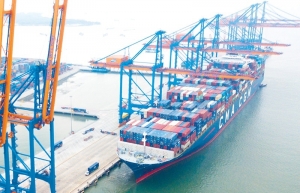 | Seaports lag behind regional peers Despite growing demands, Vietnam’s seaport development masterplan has been deemed inappropriate by experts, leaving much to be desired in the race to attain capital. |
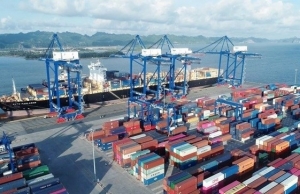 | Profitable seaports suffer on-year falls After some improvements in 2021, the performance of joint venture seaports between Vietnam Maritime Corporation and its foreign partners has dimmed so far this year. |
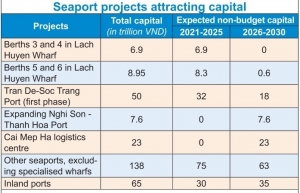 | Seaport ventures to rake in new funds The Ministry of Transport this month submitted a report requesting approval to implement the master plan for Vietnam’s seaport system for the 2021-2030 period. |
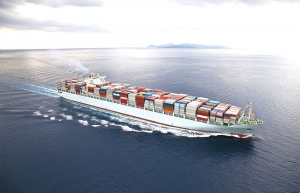 | Investors seek seaport access improvements While having interest in seaport projects, both domestic and foreign companies are seeking better infrastructure access and development of quality distribution and logistics centres before making concrete plans. |
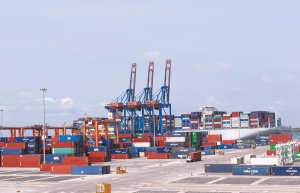 | Seaports missing out on fee windfalls Vietnamese shipping organisations’ proposal to raise charges for container loading and unloading services at seaports, if becomes true, will not affect exporters and importers. |
What the stars mean:
★ Poor ★ ★ Promising ★★★ Good ★★★★ Very good ★★★★★ Exceptional
Related Contents
Latest News
More News
- KK Group opens global flagship store in Ho Chi Minh City (January 19, 2026 | 11:52)
- Gia Lai draws over $1bn in new investment so far this year (January 19, 2026 | 11:50)
- Unlocking capital flows for strategic and suitable projects (January 18, 2026 | 09:00)
- ACV begins cargo terminal construction at Danang Airport (January 17, 2026 | 15:57)
- Viettel starts construction of semiconductor chip production plant (January 16, 2026 | 21:30)
- Bel expands Vietnam production with $19.7 million investment (January 16, 2026 | 16:07)
- ASML signals long-term commitment to Vietnam (January 16, 2026 | 12:00)
- Ho Chi Minh City starts construction of four key infrastructure projects (January 15, 2026 | 17:22)
- PIDG invests with AquaOne to expand Xuan Mai’s treated water supply to Hanoi (January 15, 2026 | 11:16)
- Vietnam ranks 38th in global AI adoption (January 14, 2026 | 16:01)

 Tag:
Tag:




















 Mobile Version
Mobile Version